Très Riches Heures du Duc de Berry
«Delights and labours of the months»
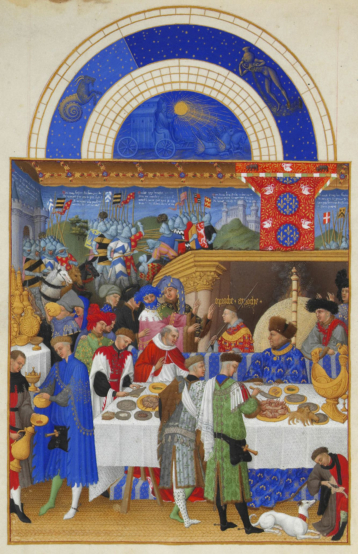
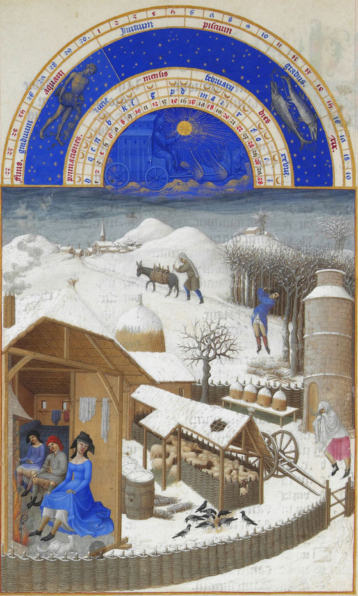
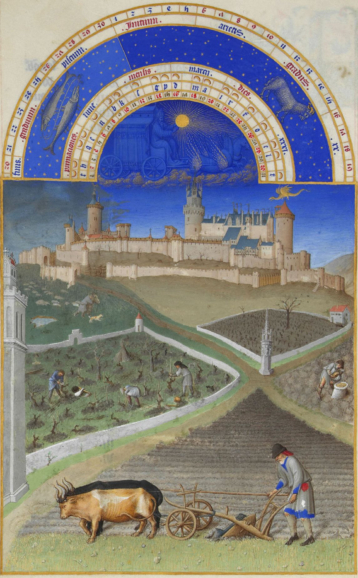
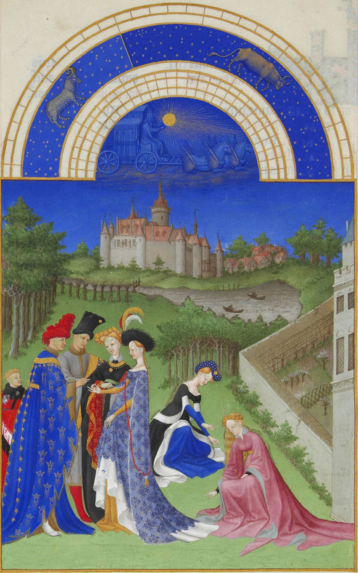
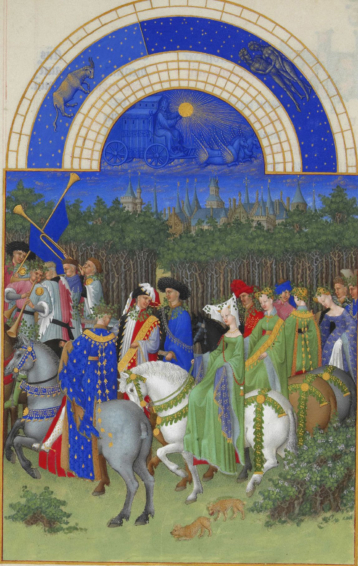
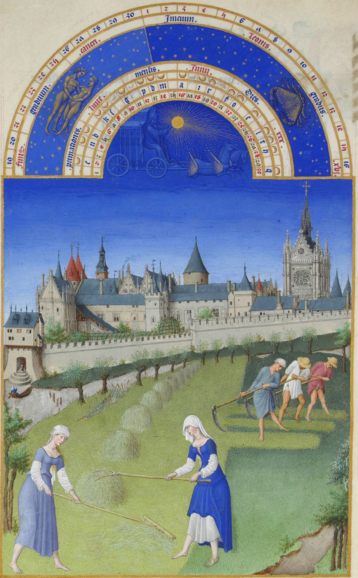
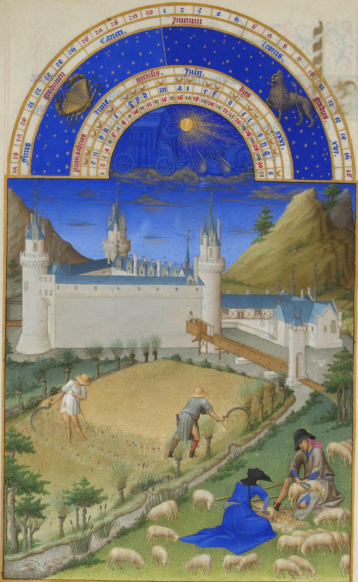
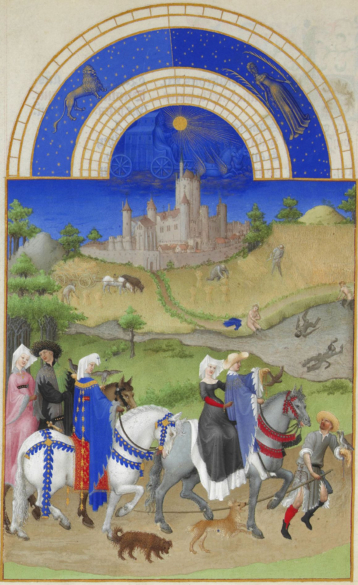
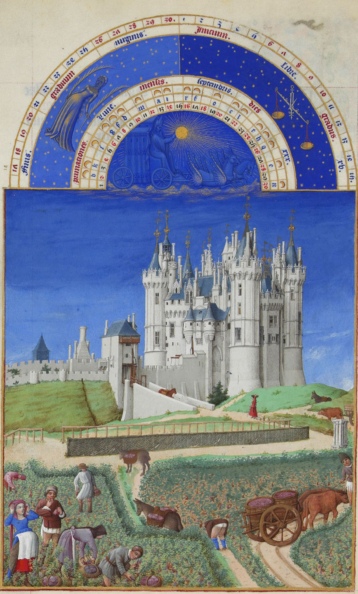
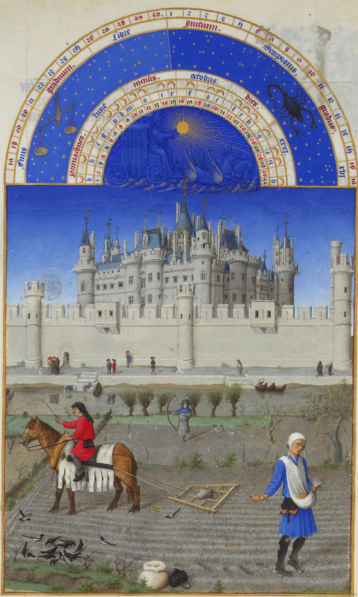
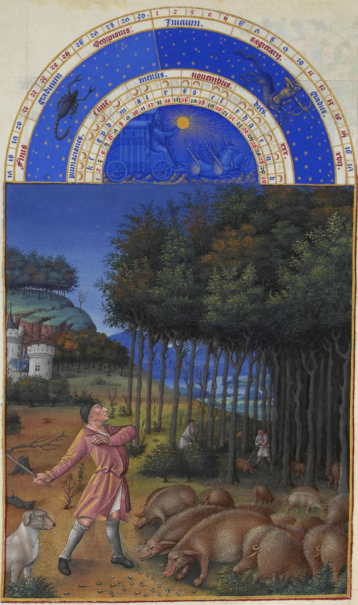

The Très Riches Heures du Duc de Berry is an illuminated manuscript commissioned by John, Duke of Berry in the first quarter of the 15th century. It was worked on with intervals long after the death of the initial client by several masters during the 15th century.
The major part of the miniatures is done by the Limbourg brothers - Herman, Paul, and Johan. Who else participated in the miniatures creation after them was not clear for quite some time. Then certain details discovered let the researchers to assert that the name of the other master is Jean Colombe, who possibly continued the work after the Limbourgs in the end of the 15th century. Later there were well-reasoned assumptions suggesting at least one more artist working on the manuscript images, but the exact name is yet to be identified.
The most well-known part of the manuscript miniatures consists of twelve images, each of them depicting months of the year with corresponding details of every day life. Most of the images have a castle used to be in possession of Duke of Berry in the background. The upper segment of the months of the year illuminations is composed of the firmament with the corresponding zodiac signs and degrees, crescent-shaped marks on days of the month when there may be a new moon in various years, letters (the first letter of alphabet means the number of one, the second one - the number of two, etc), indicating positions of the years in the 19 years lunar Metonic cycle - the years the new moons at the marked days of the month fall on, the number of days of the month and solar chariot. Some of the characters and landscapes of the miniatures may be related to real people and localities. For instance, there is a speculation that in the January miniature there are supposed self-portraits of the Limbourg brothers among the people portrayed.
Sources and links
- Bellosi L. Come un prato fiorito: studi sull'arte tardogotica. Editoriale Jaca Book, 2000
- Bourdin S-J. Analyse des Très Riches Heures du duc de Berry : identification des personnages figurant dans le calendrier. Dourdan: Imprimerie H . Vial, 1982.
- Decoding the Calendar.
- Durrieu P. Les Très Riches Heures de Jean de France, duc de Berry. Plon, 1904.
- Dückers R., Roelofs P. The Limbourg Brothers: Nijmegen Masters at the French Court 1400-1416. Anvers: Ludion, 2005.
- En.wikipedia.org : Très Riches Heures du Duc de Berry.
- Harthan, John. The Book of Hours. New York: Thomas Y. Crowell Company, 1977.
- Labeur and Paresse: Ideological Representations of Medieval Peasant Labor.
- The Très Riches Heures du Duc de Berry (1416).
- Les Très Riches Heures du Duc de Berry - The Book of Hours.
- Longnon, Jean. Introduction. The Très Riches Heures of Jean, Duke of Berry. By Musée Condé, Chantilly. Trans. Victoria Benedict. New York: George Braziller, Inc., 1969.
- Meiss, Milard. Preface. The Très Riches Heures of Jean, Duke of Berry. By Musée Condé, Chantilly. Trans. Victoria Benedict. New York: George Braziller, Inc., 1969.
- Musée Condé, Chantilly. The Très Riches Heures of Jean, Duke of Berry. Trans. Victoria Benedict. New York: George Braziller, Inc., 1969.
- Papertiant G. Les Très riches Heures du duc de Berry // Revue des Arts. - 1952. - № II. - p. 52-58
- Pognon E. Les Très Riches Heures du Duc de Berry. Geneva: Liber, 1987
- Reynolds C. The "Très Riches Heures", the Bedford Workshop and Barthélemy d'Eyck // Burlington Magazine. - Т. 147. - № 1229, août 2005. - p. 526-533
- Stirnemann P. Combien de copistes et d'artistes ont contribué aux Très Riches Heures du duc de Berry? // Elisabeth Taburet Delahaye, La création artistique en France autour de 1400. - École du Louvre, 2006. - p. 365-380. - (Rencontres de l'école du Louvre)
- Thomas, Marcel. The Golden Age: Manuscript Painting at the Time of Jean, Duke of Berry. Trans. Ursule Molinaro and Bruce Benderson. New York: George Braziller, Inc., 1979.
- Wieck, Roger S. Time Sanctified: The Book of Hours in Medieval Art and Life. New York: George Braziller, Inc.; Baltimore: The Walters Art Gallery, 1988.